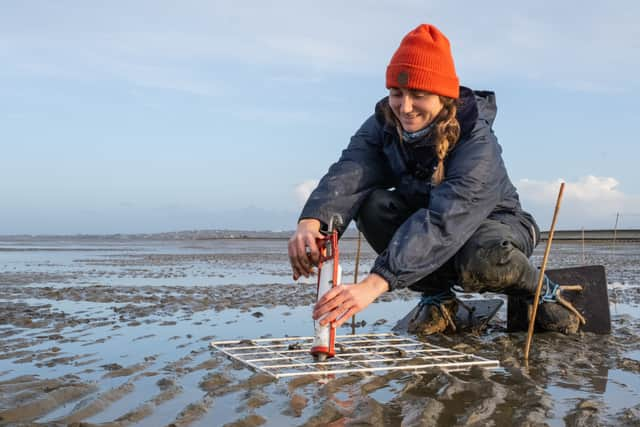Seagrass: Ambitious project hopes to restore the Thames’ 'underwater meadows' by sowing seagrass seeds
and live on Freeview channel 276
An ambitious project hoping to shed some light on how environmentalists can one day restore the Thames estuary's biodiversity-boosting "underwater meadows", is now underway.
Conservationists from the Zoological Society of London (ZSL) have been hard at work planting tiny dwarf eelgrass seeds across three sites in Kent - including Seasalter and Elmley Nature Reserve - as part of a trial to help restore the area's vital seagrass meadows. The work is part of a larger ZSL-led project called Restoring the Thamescape, which aims to restore coastal habitats in the Thames by restoring multiple habitats together, including native oysters and saltmarsh.
Advertisement
Hide AdAdvertisement
Hide AdSeagrass, the only flowering plant to grow in seawater, plays an essential role within marine ecosystems - providing food and shelter for wildlife that call it home, from seahorses to sharks. But the UK's coastlines have lost almost half of their seagrass in the last 90 years – with 39% of that loss having happened since the 1980s. However, ZSL experts say that with evidence-based conservation action, they have the chance to reduce the environmental pressures seagrass habitats face, and restore the "lush green meadows" at scale.


"Seagrass seeds may be small, but each one is vital to recover this extraordinary habitat," ZSL conservation project manager Thea Cox said. "Seagrass meadows provide essential nursery grounds for fish, food for birds, and habitat for a range of invertebrates – meaning they play a vital role in the health of marine habitats."
Many seagrass species can also help absorb and store carbon, she continued, both within their tissues and by locking it away in the sediment – meaning they can also play an important role in tackling climate change. “The reason we’ve seen such drastic declines in seagrass cover in the UK is likely a combination of factors – such as reduced water quality and caused by pollution, physical disturbance of meadows, and industrial development," Ms Cox added.
"Restoration work is just one part of the picture to create more and healthier seagrass beds – we also need action to address the threats, thereby protecting existing meadows as well as creating the conditions to maximise the chances of restoration success at scale.”
Advertisement
Hide AdAdvertisement
Hide AdUsing a modified sealant gun and guidance from experts in the Dutch Wadden Sea - who developed this method - the team have carefully injected precise amounts of mud and seed mixture into the ground at the trial sites, and will continue to monitor these sites over the coming months as the eelgrass grows. While the seagrass restoration project is currently small-scale, ZSL says it, and other trials like it, will provide important information for scaling up restoration efforts in the Thames estuary.
Dwarf eelgrass is just one of 72 seagrass species found around coastlines globally - including in Scotland and the Thames Estuary - but was chosen for the trial in part because it provides overwintering food for birds, including brent geese, mute swan and wigeons.
Comment Guidelines
National World encourages reader discussion on our stories. User feedback, insights and back-and-forth exchanges add a rich layer of context to reporting. Please review our Community Guidelines before commenting.
